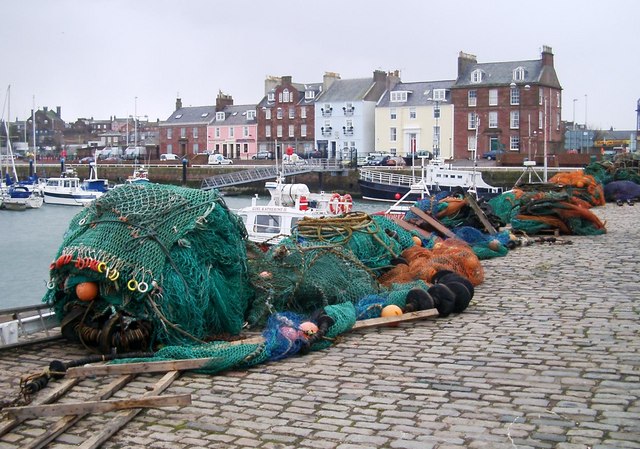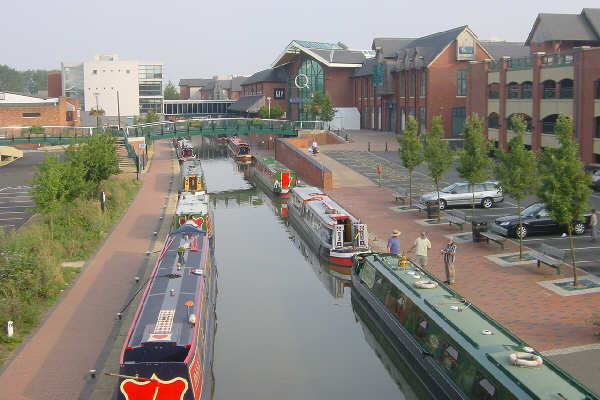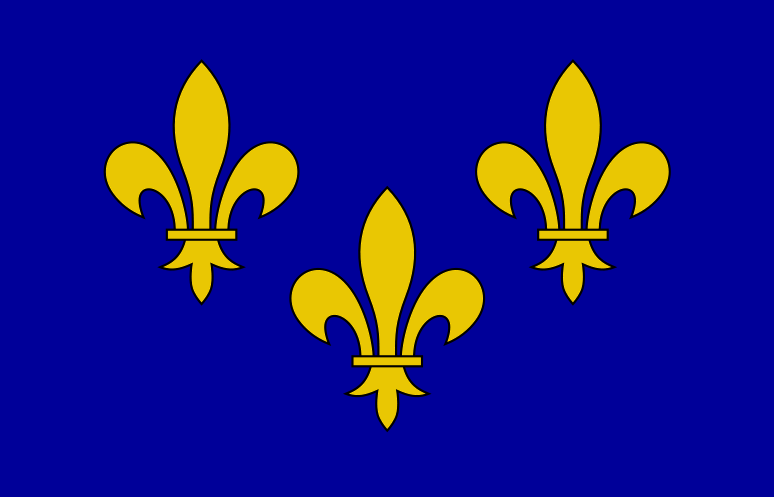|
Thomas Fisher (MP)
Thomas Fisher or Hawkins (died 1577), was an English politician. Early life He was of obscure origin and was usually known by the name of Fisher, because his father was a fishmonger in Warwick. His ability recommended him to John Dudley, Viscount Lisle, who took him into his service, and on 4 May 1542 constituted him high steward and bailiff of his manor of Kibworth Beauchamp, Leicestershire. For his exercise of that office during life Fisher had an annuity granted to him, which was confirmed in the reign of Mary I. He became one of the two Members of Parliament for Warwick. Dissolution of the monasteries He contrived to accumulate a vast estate in monastery and church lands. In 1546 he obtained the site of St Sepulchre's Priory, Warwick, with the lands adjacent, and proceeded to pull the monastery to the ground, raising in the place of it a house Hawkyns-nest, or Hawks-nest, also the 'Priory'; now the estate is Priory Park. In 1547, Bishop's Itchington, Warwickshire, being ... [...More Info...] [...Related Items...] OR: [Wikipedia] [Google] [Baidu] |
John Dudley, Duke Of Northumberland
John Dudley, 1st Duke of Northumberland (1504Loades 2008 – 22 August 1553) was an English general, admiral, and politician, who led the government of the young King Edward VI from 1550 until 1553, and unsuccessfully tried to install Lady Jane Grey on the English throne after the King's death. The son of Edmund Dudley, a minister of Henry VII executed by Henry VIII, John Dudley became the ward of Sir Edward Guildford at the age of seven. Dudley grew up in Guildford's household together with his future wife, Guildford's daughter Jane, with whom he was to have 13 children. Dudley served as Vice-Admiral and Lord High Admiral from 1537 until 1547, during which time he set novel standards of navy organisation and was an innovative commander at sea. He also developed a strong interest in overseas exploration. Dudley took part in the 1544 campaigns in Scotland and France and was one of Henry VIII's intimates in the last years of the reign. He was also a leader of the religiou ... [...More Info...] [...Related Items...] OR: [Wikipedia] [Google] [Baidu] |
Alexander Crichton Of Brunstane
Alexander Crichton of Brunstane, (died before December 1558), was a Scottish Protestant laird who advocated the murder of Cardinal David Beaton and supported the plan for the marriage of Mary, Queen of Scots and Prince Edward of England. In contemporary letters and documents Alexander is known by variant spellings of " Brunstane," his territorial designation. The original House of Brunstane was near Penicuik, and another Crichton estate at Gilberstoun near Portobello, Edinburgh later became known as Brunstane. Career Affair of the Cardinal's letters Alexander Crichton went to France carrying royal letters in 1539 and as a servant of Cardinal Beaton. On his return in February 1540 his ship was forced by a storm to anchor in an English harbour. Subsequently, the English ambassador in Scotland Ralph Sadler tried to embarrass and discredit Cardinal Beaton in front of James V of Scotland with compromising letters captured from Brunstane's bag. James V however argued in favour of the ... [...More Info...] [...Related Items...] OR: [Wikipedia] [Google] [Baidu] |
Lady Jane Grey
Lady Jane Grey (1536/1537 – 12 February 1554), also known as Lady Jane Dudley after her marriage, and nicknamed as the "Nine Days Queen", was an English noblewoman who was proclaimed Queen of England and Ireland on 10 July 1553 and reigned until she was deposed by the Privy Council of England, which proclaimed her cousin, Mary I, as the new Queen on 19 July 1553. Jane was later beheaded for high treason. Jane was the great-granddaughter of Henry VII (through his youngest daughter, Mary Tudor), a grand-niece of Henry VIII, and cousin to Edward VI, Mary I, and Elizabeth I. Under the will of Henry VIII, Jane was in line to the throne after her cousins. She had a humanist education and a reputation as one of the most learned young women of her day. In May 1553, she was married to Lord Guildford Dudley, a younger son of Edward VI's chief minister, John Dudley, Duke of Northumberland. In June 1553 the dying Edward VI wrote his will, nominating Jane and her male heirs as succe ... [...More Info...] [...Related Items...] OR: [Wikipedia] [Google] [Baidu] |
Banbury Castle
Banbury Castle was a medieval castle that stood near the centre of the town of Banbury, Oxfordshire. Historian John Kenyon notes that the castle is "remarkable for its early concentric shape".Kenyon, p. 68. History Banbury Castle was built in 1135 by Alexander, Bishop of Lincoln, in a motte and bailey design.Mackenzie, p. 150;Banbury: Buildings, ''A History of the County of Oxford: Volume 10: Banbury Hundred'', pp. 29–42, accessed 22 June 2011. The castle was later confiscated from Alexander by King Stephen in 1139, but was returned to the bishop later that year and mostly remained in the hands of later bishops until 1547. The castle was protected by a castle-guard drawn from estates around Banbury. The castle was strengthened between 1201–7 during the reign of King John. The castle was subsequently completely rebuilt; earlier historians had concluded that the rebuilding occurred in the late 13th century, but archaeological excavations in the 1970s demonstrated that the wor ... [...More Info...] [...Related Items...] OR: [Wikipedia] [Google] [Baidu] |
Oxfordshire
Oxfordshire ( ; abbreviated ''Oxon'') is a ceremonial county in South East England. The county is bordered by Northamptonshire and Warwickshire to the north, Buckinghamshire to the east, Berkshire to the south, and Wiltshire and Gloucestershire to the west. The city of Oxford is the largest settlement and county town. The county is largely rural, with an area of and a population of 691,667. After Oxford (162,100), the largest settlements are Banbury (54,355) and Abingdon-on-Thames (37,931). For local government purposes Oxfordshire is a non-metropolitan county with five districts. The part of the county south of the River Thames, largely corresponding to the Vale of White Horse district, was historically part of Berkshire. The lowlands in the centre of the county are crossed by the River Thames and its tributaries, the valleys of which are separated by low hills. The south contains parts of the Berkshire Downs and Chiltern Hills, and the north-west includes part o ... [...More Info...] [...Related Items...] OR: [Wikipedia] [Google] [Baidu] |
Banbury
Banbury is an historic market town and civil parish on the River Cherwell in Oxfordshire, South East England. The parish had a population of 54,335 at the 2021 Census. Banbury is a significant commercial and retail centre for the surrounding area of north Oxfordshire and southern parts of Warwickshire and Northamptonshire which are predominantly rural. Banbury's main industries are motorsport, car components, electrical goods, plastics, food processing and printing. Banbury is home to the world's largest coffee-processing facility ( Jacobs Douwe Egberts), built in 1964. The town is famed for Banbury cakes, a spiced sweet pastry. Banbury is located north-west of London, south-east of Birmingham, south-east of Coventry and north-west of Oxford. Toponymy The name Banbury may derive from "Banna", a Saxon chieftain said to have built a stockade there in the 6th century (or possibly a byname from meaning ''felon'', ''murderer''), and / meaning ''settlement''. In Anglo Sa ... [...More Info...] [...Related Items...] OR: [Wikipedia] [Google] [Baidu] |
Rheum
Rheum (; from Greek language, Greek: wikt:ῥεῦμα, ῥεῦμα ''rheuma'' 'a flowing, rheum') is a thin mucus naturally discharged from the eyes, nose, or mouth, often during sleep (contrast with mucopurulent discharge).Amodio, Aime"Where Do Eye Boogers Come From?" Families.com blogHiskey, Daven"What the 'Sleep' In Your Eyes Is" ''Today I Found Out'', 23 February 2011. Rheum dries and gathers as a crust in the corners of the eyes or the mouth, on the eyelids, or under the nose. It is formed by a combination of mucus (in the case of the eyes, consisting of mucin discharged from the cornea or the Conjuctiva, conjunctiva), nasal mucus, blood cells, Skin, skin cells, or dust. Rheum from the eyes is particularly common. Dried rheum near the eyes is commonly called 'sleep', 'sleepy-seeds', 'sleepy buds',Eric Partridge, Paul Beale, ed., ''A Dictionary of Slang and Unconventional English'', 8th edition, 1984, ''s.v.'' 'sleepy sand', 'eye boogers', 'eye goop', 'sleepies', or 'eye gu ... [...More Info...] [...Related Items...] OR: [Wikipedia] [Google] [Baidu] |
Siege Of Haddington
The sieges of Haddington were a series of sieges staged at the Royal Burgh of Haddington, East Lothian, Scotland, as part of the War of the Rough Wooing, one of the last Anglo-Scottish Wars. Following Regent Arran's defeat at the battle of Pinkie Cleugh on Saturday 10 September 1547, he captured the town of Haddington. The intention was to form a network of mutually supporting English forts in lowland Scotland. The English forces built artillery fortifications and were able to withstand an assault by the besieging French and Scots troops supported by heavy cannon in July 1548. Although the siege was scaled down after this unsuccessful attempt, the English garrison abandoned the town on 19 September 1549, after attrition by Scottish raids at night, sickness, and changing political circumstance. The English dig in The English commander, Grey of Wilton, captured and garrisoned Haddington and outlying villages by 23 February 1548. The garrison included 200 Albanian Stratioti who ... [...More Info...] [...Related Items...] OR: [Wikipedia] [Google] [Baidu] |
Innerwick
Innerwick () is a coastal civil parish and small village, which lies in the east of East Lothian, from Dunbar and approximately from Edinburgh. Name The name Innerwick is of Anglo-saxon origin and means inland farm or dwelling place. It was presumably coined around the 7th – 9th centuries. Prehistory Excavations to the north of Innerwick, at Dryburn Bridge, in 1978 and 1979 found a multi-period site dating from the Mesolithic to the Iron Age. The site was discovered in 1974 through aerial photography and was excavated as a result of the threat posed by limestone quarrying in the area. The excavation found evidence of Mesolithic and Neolithic occupation in this area. These were next to two cist burials dating to 2300–2000 BC, the Bronze Age. All of which were under a later Iron Age settlement. One of the skeletons from the cists had indications of leprosy, which would have made it the earliest example in Europe, but extensive analysis indicated that it was actually ... [...More Info...] [...Related Items...] OR: [Wikipedia] [Google] [Baidu] |
Mary, Queen Of Scots
Mary, Queen of Scots (8 December 1542 – 8 February 1587), also known as Mary Stuart or Mary I of Scotland, was List of Scottish monarchs, Queen of Scotland from 14 December 1542 until her forced abdication in 1567. The only surviving legitimate child of James V of Scotland, Mary was six days old when her father died and she inherited the throne. During her childhood, Kingdom of Scotland, Scotland was governed by regents, first by the heir to the throne, James Hamilton, Earl of Arran, and then by her mother, Mary of Guise. In 1548, she was betrothed to Francis II of France, Francis, the Dauphin of France, and was sent to be brought up in Kingdom of France, France, where she would be safe from invading Kingdom of England, English forces during the Rough Wooing. Mary Wedding of Mary, Queen of Scots, and Francis, Dauphin of France, married Francis in 1558, becoming queen consort of France from his accession in 1559 until his death in December 1560. Widowed, Mary Entry of Mary, Q ... [...More Info...] [...Related Items...] OR: [Wikipedia] [Google] [Baidu] |
George Hay, 7th Earl Of Erroll
George Hay, 7th Earl of Erroll ( – 30 January 1573) was a Scottish nobleman and politician. Biography Hay was the grandson of William Hay, 3rd Earl of Erroll; George's father Thomas was killed alongside his older brother, William Hay, 4th Earl of Erroll, at the Battle of Flodden in 1513. After his cousin William Hay, 6th Earl of Erroll died in 1541 leaving only a young daughter, George succeeded to the earldom and with it the family title of Lord High Constable of Scotland. The sixth earl, who inherited the earldom as a toddler, died under the age of 21; by the time George inherited the titles, the barony had been in the possession of the crown for 19 years, four months. The Peerage of Scotland allows titles to descend along the female lines; Jean Hay, the young daughter of the sixth earl of Erroll, could have inherited the earldom as Countess of Erroll. Instead, the crown negotiated for George to inherit, with the condition that he pay 4,000 merks to Helen, Dowager C ... [...More Info...] [...Related Items...] OR: [Wikipedia] [Google] [Baidu] |
John Stewart, 4th Earl Of Atholl
John Stewart, 4th Earl of Atholl (died 25 April 1579), called the Fair, was a Scottish nobleman and courtier. He was favoured by Mary, Queen of Scots, but later turned against her. Biography Stewart was the son of John Stewart, 3rd Earl of Atholl and Grizel Rattray. He supported the government of the queen dowager Mary of Guise. He wrote to her on 10 June 1554 describing a skirmish in which his cousin George Drummond of Ledcrieff was killed by the lairds of Ardblair, Drumlochie, and Gormok, his followers. Lord Ruthven, sheriff of Perth, and Lord Drummond had searched for these lairds in vain but arrested six innocent poor men, who also depended on him. He hoped she could arrange a fair trial for them in Edinburgh or Perth, especially because Lord Ruthven favoured the Drummonds. He was coming to see her, but had fallen ill and wrote from Tullibardine. Subsequently, Patrick Blair of Ardblair was found, tried, and beheaded for the murder. In 1560 he was one of the three noble ... [...More Info...] [...Related Items...] OR: [Wikipedia] [Google] [Baidu] |






